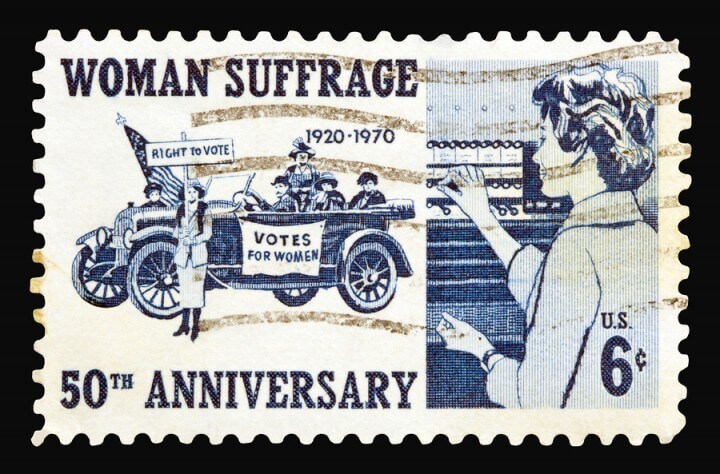A look back at women’s history shows a long and event filled timeline. Many people are simply unaware of the long struggle and constant work that many Americans gave so that women can enjoy the rights they have today. Here is a look at some of the significant events in women’s history:
•1848- In this historic year the first women’s rights convention is held in Seneca Falls, New York. After 2 heated days of discussion and debate, 68 women and 32 men sign the Declaration of Sentiments, which outlines grievances and sets the agenda for what will become the women’s rights movement. In addition a set of 12 resolutions is adopted calling for equal treatment of women and men under the law and voting rights for women.
•1850-The first National Women’s Rights Convention takes place in Worcester, Massachusetts and attracts more than 1,000 participants. In the ensuing years national conventions will be held yearly (except for 1857) through 1860.
•1869-In May of that year Susan B. Anthony and Elizabeth Cady Stanton form the National Woman Suffrage Association. The primary goal of this organization is to achieve voting rights for women by means of a Congressional amendment to the Constitution. In November of that same year Lucy Stone, Henry Blackwell, and others form the American Woman Suffrage Association. This group will focus exclusively on gaining voting rights for women through amendments to individual state constitutions. The first victory comes on December 10, 1869 when the territory of Wyoming passes the first women’s suffrage law. The following year, women will begin serving on juries in the territory.
•1890- The National Women Suffrage Association and the American Women Suffrage Association agree to merge and form the National American Woman Suffrage Association (NAWSA). As the movement’s mainstream organization, NAWSA pushes forward to wage state-by-state campaigns to obtain voting rights for women.
•1893-Western states lead the way to grant women the right to vote with Colorado being the first state to adopt an amendment granting women the right to vote. Utah and Idaho follow in 1896, Washington State in 1910, California in 1911, Oregon, Kansas, and Arizona in 1912, Alaska and Illinois in 1913, Montana and Nevada in 1914, New York in 1917; Michigan, South Dakota, and Oklahoma in 1918.
•1913- In order to work toward the passage of federal amendment to give women the right to vote Alice Paul and Lucy Burns form the Congressional Union. The group is later renamed the National Women’s Party. Members gain nationwide notoriety when they picket the White House and practice other forms of civil disobedience.
•1919-After a 72 year struggle the federal woman suffrage amendment, (originally written by Susan B. Anthony and introduced in Congress in 1878), is passed by the House of Representatives and the Senate. It is then sent on to the states for ratification.
•1920-On August 26 the 19th Amendment to the Constitution, granting women the right to vote, is signed into law by Secretary of State Bainbridge Colby.
After gaining the right to vote women’s rights organization did not simply disband and disappear. They then combined their considerable social power with their newfound political rights to help improve conditions for women across the country. Their influence was felt directly and indirectly in many of the legislative acts that helped improve conditions for women. Here are only a few of the highlights of their work.
•1961- President John Kennedy establishes the President’s Commission on the Status of Women and appoints well respected Eleanor Roosevelt as the chairwoman. The report that is issued by the Commission in 1963 documents substantial discrimination against women in the workplace and makes specific recommendations for improvement theses include fair hiring practices, paid maternity leave, and affordable child care. In June of 1961 Congress passes the Equal Pay Act, making it illegal for employers to pay a woman less than what a man would receive for the same job.
•1964- Title VII of the Civil Rights Act is passed to help end discrimination in employment on the basis of race and sex. At the same time the act establishes the Equal Employment Opportunity Commission (EEOC) to investigate complaints and impose penalties.
•1973-On June 23 of that year a significant amendment is passed Title IX of the Education Amendments bans sex discrimination in schools. As a result of Title IX, the enrollment of women in athletics programs and professional schools increases dramatically.
•1978- The Pregnancy Discrimination Act is passed and bans employment discrimination against pregnant women. Under the Act, a woman cannot be fired or denied a job or a promotion because she is or may become pregnant, nor can she be forced to take a pregnancy leave if she is willing and able to work.
•1986-The Supreme Court finds that sexual harassment is a form of illegal job discrimination.
•2003-The Supreme Court rules that states can be sued in federal court for violations of the Family Leave Medical Act.


Leave a Reply